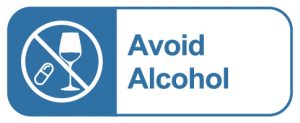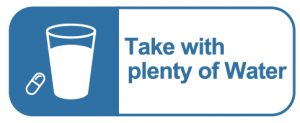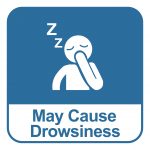The Drug Icons
We have designed 30 drug icons in 6 categories: Dosing Scheule, Dosage, Drugs Storage, Other Remarks and How to Use, Route of Administration.
We will continue to collect users’ feedback and enhance the design the existing and new drug icons.



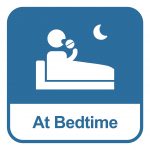
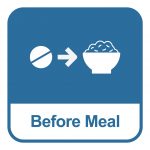
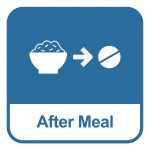

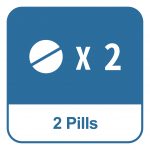
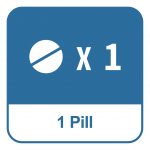
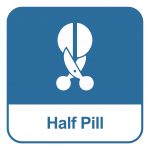
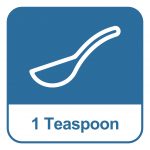

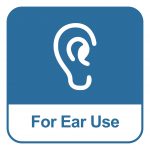
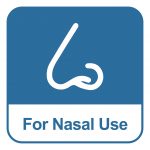
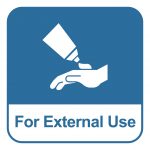
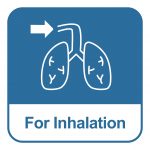
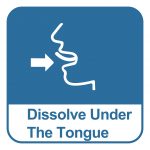
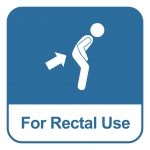
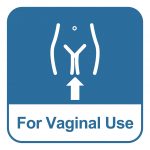


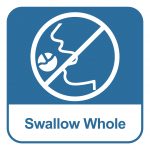


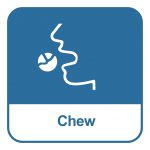

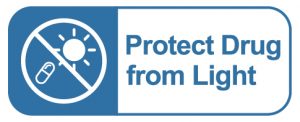

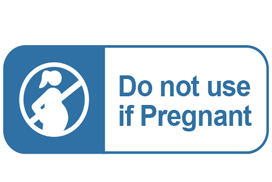
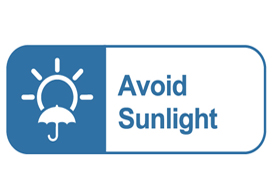
Dosaging Schedule
【Morning】【Midday】【Evening】【At Bedtime】
Unless other specified instruction by the doctor, the general interval between the medications is as follows:
1. Once a day: It should be taken at the same time every day.
2. Twice a day: It should be taken every 10-12 hours.
3. Three times a day: It should be taken every 6-8 hours .
4. Four times a day: It should be taken every 4-6 hours.
Generally speaking, a shorter interval means the effect of the drugs is for a shorter period of time . Some common drugs are taken 4-6 hours apart each time, so taking four times a day usually refers to the 4 periods of breakfast, lunch, dinner, and before going to bed while taking it 3 times a day refers to 3 meal periods in the morning, noon and evening. Medication specified “twice a day” means that the drug has a longer validity period, which is around 8 hours apart, and it is mostly taken at breakfast and dinner time.
Medication specified “once a day” is taken at a specific time every day. Most drugs can be taken either in the morning or evening. Hypnotics and the drugs that increase drowsiness are excluded, and other drugs with a marked time of administration. For example, some Hypolipidemic agents need to be used in conjunction with the liver to metabolize fat and they are recommended to be taken before bedtime.
【Before Meal】
Generally, pre-meal refers to half an hour to 1 hour before a meal or 2 hours after a meal. The common reason for taking medication before a meal is to reduce interference of the food with drug absorption.
The active ingredients of oral drugs must be absorbed from the gastrointestinal tract into the blood, and then carried by the blood to the liver and the whole body.
Food in the body can increase or decrease the absorption of certain drugs which may lead to the increased side effects or decreased efficacy. The absorption of some antibiotics could be reduced by the presence of food or the gastric acid, so it is recommended to be taken an hour before or two hours after a meal to maintain the best effect.
【After Meal】
Generally ,medication after a meal refers to the medicines taken half an hour to one hour after a meal, and a small amount of food is enough to deliver the medicine. Common reasons for taking medication after meals are
1. Reduce the side effects
Some drugs are easy to cause gastrointestinal discomfort. Taking them after meals can reduce related side effects. Such drugs include anti-inflammatory and painkilling drugs , calcium supplement, and iron supplement, etc.
2. Ensure efficacy
Food can increase the absorption of certain drugs, thus enhancing the efficacy.
Dosage
【1 Pill】【2 Pills】
We usually swallow whole pills or tablets, and the dosage is adjusted according to the condition inorder to ensure the efficacy or to avoid increasing side effects.
Therefore, the drug label should be read carefully before taking the medicine , and it should be taken in accordance with the dosage indicated on the label.
【Half Pill】
Individual medicines may need to be cut into quarters or halves. If you need to cut tablets, it is generally recommended to use a pill splitter rather than using other methods, such as cutting with a knife, because this may cause an uneven cutting of the drug and thus affects the efficacy.
It is not recommended to cut a large number of tablets at once, because the tablets that are cut are more prone to deterioration and are difficult to store.
- The pill must be placed on the top of the triangle of the pill cutter and attached to both sides to prevent unevenness when cutting the pill.
- Slowly pull down the upper cover with the cutter until the blade touches the pill, and then cut the pill at once.
- Clean the powder in the pill cutter regularly to prevent knife rust or contaminating other pills to be cut.
【1 Teaspoon】
The standard weight of a teaspoon is 5ml, and it can be purchased in either pharmacies or clinics.
As different children have different weights, the standard medicine spoon may not accurately measure the dose that needs to be taken. At this time, parents can choose to use oral syringes, such as needle-free syringes or droppers, to feed their children.
The oral syringes have clear graduations, which could help reduce unnecessary side effects.
Route Of Administration
【For Eye Use】
Eye drops are medicinal solvents or the suspending agents that work through instillation into the eyes. It’s mainly used to relieve eye discomfort or treat dryness, glaucoma,or infections, etc.
Eye drops have a specific expiration date after opening the bottle for use. Please pay attention to the instructions on the drug label and do not use the expired eye drops.
Eye Ointments Eye ointment is a topical medicine which is used for the eyes. It’s mainly used to relieve eye discomfort , treat dryness, or infections, etc.
1. Wash your hands thoroughly.
2. If you wear contact lenses, please remove them before taking the medicine.
3. Gently shake the eye drops and while opening the cap of the eye drops, avoid touching the drip tip of the bottle.
4. Put your head back or lie down on the bed in a comfortable position. Look up and gently pull the lower eyelid downwards with fingers to form a bag.
5. Slightly press the medicine bottle to drip the eye drops into the eye bags. Avoid any contact with the drip tip, eyelashes or any part of the eye, so as not to hurt the eyes. Keep the drip tip clean.
6. Close your eyes after putting the eye drops. At the same time, gently press your fingers on the corner of your eyes near the bridge of your nose for 1 to 2 minutes. Wipe off the excess eye drops with a tissue.
7. In order to use more than one drop, repeat steps 4-6.
8. Cover the eye drops immediately after the use, there is no need to clean the drip tip.
9. If you need to use more than one type of eye drops or ointment for the same eye, the usage of two should be separated by at least 5 to 10 minutes of the gap before they are used.
1. Wash your hands thoroughly.
2. If you wear contact lenses, please remove them before taking the medicine.
3. When opening the eye ointment cap, be careful not to touch the mouth of the eye ointment bottle.
4. Put your head back or lie down on the bed in a comfortable position. Look up and gently pull the lower eyelid downwards with fingers to form a bag.
5. Squeeze about 4 to 5 mm (about the size of a grain of rice) of the eye ointment into the eyelid. Avoid contact with eyelashes, or other things when applying the medicine, in order to protect the eyes. Keep the mouth of the bottle clean.
6. After applying the ointment, close your eyes and gently roll your eyes so that the ointment is evenly distributed in the eyes. Wipe off excess eye ointment with a tissue.
7. In order to use more than one drop, repeat steps 4-6.
8. The eye ointment should be covered immediately after the use, there is no need to clean the mouth of the bottle.
9. If you need to use more than one type of eye drops or ointment for the same eye, the usage of two should be separated by at least 5 to 10 minutes of the gap before they are used.
【For Ear Use】
Ear drops are instilled into the ears to produce a local effect directly into the ears.
It generally contains antimicrobial or anti-inflammatory ingredients which are used for the treatment of infections.
How to use it?
1. Wash your hands with water and soap.
2. The ear flaps should be cleaned if necessary.
3. Tilt your head sideways or lie on the side with your ear facing upwards.
4. For adults and children aged 3 years or above, pull the ear slightly backward and upward to straighten the ear canal while for children aged under 3 , the ear should be slightly pulled backward and downward to straighten the ear canal.
5. Instill the prescribed number of drops into the affected ear(s). Avoid touching the tip of the bottle in order to keep it clean.
6. After putting the ear drops into the affected ear, keep your head tilted sideways for about 2 minutes to prevent the ear drops from running out of the ear.
7. Do not wash the tip. Tighten the cap after use.
【For Nasal Use】
Nasal Drops are the solution or suspension of medicine. They are instilled into the nostrils, usually to produce a local effect directly into the nose.
The nasal spray is sprayed into the nostrils, usually to produce a local effect directly inside the nose. It can be used to treat and control chronic rhinitis and allergic rhinitis. It can also be used for the relief of nasal congestion due to common colds and flu. There could be other uses of the nasal spray. Please consult your doctor or pharmacist if in doubt.
1. Gently blow the nose to ensure that nostrils are clear before using the nasal drops.
2. Wash your hands with soap and water.
3. Take the cap off the bottle.
4. Sit on a chair and tilt the head backward, or lie on a bed and put a pillow under the upper back to ensure that the head tilts backward.
5. Point the tip carefully towards the nostril and instill the prescribed number of drops into the nostril. Avoid touching the tip to keep it clean.
6. Keep the head tilted backwards for about 2 minutes so that the drops are drained into the back of the nose.
7. Repeat steps 5 to 6 for the other nostril if advised by the doctor or pharmacist.
8. Do not wash the tip. Close the cap of the bottle after the use.
9. Wash hands after using the nasal drops.
Directions of the usage may differ among brands. Read carefully and follow the instructions for individual products.
1. Gently blow the nose to ensure that the nostrils are clear before using the nasal spray.
2. Wash hands with soap and water.
3. Shake the nasal spray before using it. Remove the cap.
4. Tilt head slightly forward. Keep the bottle upright.
5. Close one nostril by gently pressing against the side of the nose with fingers.
6. Insert the nozzle of the nasal spray into the other nostril, away from the center ridge of the nose.
7. Spray one dose into the nostril. At the same time, breathe in slowly through your nostril.
8. Remove the nozzle of the nasal spray from the nostril and breathe out through the mouth.
9. Shake the nasal spray and then repeat the steps 4 to 8 if a second dose is required for the same nostril.
10. Shake the nasal spray and then repeat the steps 4 to 9 for the other nostril if required.
11. Wipe the nozzle of the nasal spray with a clean tissue. Cap the bottle after the use.
【Dissolve Under The Tongue】
Some drugs should be taken under the tongue so that the drug is quickly absorbed through the blood vessels under the tongue, achieve the drug effect quickly and reduce the liver’s impact on the drug. Nitroglycerins is one of the most common sublingual medications. It is taken under the tongue and thus it can be easily absorbed. By dilating the blood vessels, they can increase the blood supply to the heart and are therefore very effective in relieving and controlling the symptoms of angina.
The following should be kept in mind when taking nitroglycerin under the tongue:
1. Take the drug as soon as symptoms appear. Do not wait until acute pain occurs.
2. Hold the pill under the tongue until it is completely dissolved.
3. To avoid dizziness or temporary headache, you should better sit down when taking the drug.
4. Do not swallow the pill. Remain calm if you swallow one. Take another pill and hold it under the tongue.
5. If angina does not subside five minutes after taking the pill, take another one.
6. If angina persists after another five minutes, take the third pill. If it still does not work, the patient should be accompanied by his/her family members, and seek urgent consultation at the accident and emergency department.
【For Inhalation】
Inhaled medications are an important part of asthma and chronic obstructive pulmonary disease (COPD) treatment. The medication goes directly into your lungs (where it is needed) thus it is more effective and causes lesser side effects. There are a variety of inhalation devices, including dry powder inhalers, metered-dose inhalers, soft mist inhalers, etc. The metered-dose inhaler is the most commonly used inhalation device.
How to use a Metered-dose Inhaler?
Note: You must use the inhalers properly to control asthma effectively. Improper use of inhalers can result in underdosing or overdosing. Your metered-dose inhaler must be primed before using for the first time:
(A) Follow steps (1) to (3), remove the mouthpiece cover, and shake the inhaler well. (B) Release 2 sprays into the air; shake well before each spray*. * The “priming” method may vary among inhalers, please refer to the instruction of individual inhalers.
1. Remove the mouthpiece cover.
2. Hold the inhaler in an upright position (with the mouthpiece down).
3. Shake the inhaler well.
4. Breathe out as far as it’s comfortable.
5. Place the mouthpiece in your mouth between your teeth and hold it with your lips around it.
6. As Soon as you start to breathe in through your mouth, press down on the top of the inhaler to release the medication while still breathing in steadily and deeply.
7. Remove the inhaler and hold your breath for about 10 seconds.
8. Exhale slowly through your mouth.
9. Wait about half a minute and repeat step (3) to (8).
10. Replace the mouthpiece cover by snapping the cap into position. To reduce side effects caused by residual drug left in the mouth cavity(e.g. thrush) , you should rinse your mouth with water after inhaling corticosteroids
【For External Use】
Precautions for using topical drugs:
1. Follow the instructions of your doctor or pharmacist on applying the topical medicine only to the specified area. Do not rush to the frequency and duration of the treatment, and do not overuse it.
2. If there is no instruction from the healthcare workers, do not bandage, apply heat or apply any dressing to the application site after the use, as this could increase the absorption of the drug and thus increases the possibility of side effects.
3. Except for the use of antibacterial drugs, disinfectants, or medical staff instructions, do not use topical medications (such as pain relief ointments/pastes or ointments containing steroids) on wounds or damaged areas, because skin damage will more likely to allow drugs to enter the body.
4. Do not use topical medications immediately (except in special cases) when the body temperature is high or the blood circulation is fast (such as after strenuous exercise or hot water shower). The ointment should be applied at least half an hour apart because the body temperature is too high. Accelerated blood circulation might increase.
5. If the topical medicine used contains the same ingredients as the oral medicine, especially medicines containing analgesic ingredients, excessive doses must be avoided to avoid accidentally exceeding the safe dose level of the drug itself and causing toxic reactions.
6. When using two or more topical medicines with the same curative effect, you must carefully check the ingredients of the medicines, and avoid using different brands of topical medicines with the same composition at the same time, this may cause overdose or side effects.
7. When purchasing drugs or seeing a doctor in a pharmacy, you should take the initiative to inform the medical staff and pharmacists of the chronic diseases and the drugs used so that they can make an assessment.
【For Vaginal Use】
The vaginal suppository is a drug dosage form used in the vagina. It is often used to treat vaginal infections. A dispenser is usually attached to the medicine box to place the drug in the vagina.
How to Use Vaginal Suppository
1. Wash your hands.
2. Pull out the applicator plunger as much as possible and place the suppository into the applicator.
3. Lie on the bed with your knees bent to facilitate the insertion of the applicator.
4. Carefully and gently insert the applicator high into the vagina, and press the plunger to release the medication.
5. Pull out the plunger from the applicator after the use. Clean them with warm water and soap, then rinse and dry. Keep them clean.
6. It is best to perform the treatment before bed.
7. Symptoms such as itching, burning, and discharge may disappear soon. It is important to continue the medication until the whole treatment course is completed.
8. Medication should not stop even when menstruation starts. Do not discontinue the treatment before the course ends.
【For Rectal Use】
Rectal suppositories are the drug preparations intended to be administered via the rectum. Rectal suppositories are commonly used for treating constipation or hemorrhoids. They can also be used when oral administration of the drug is not feasible.
How to Use Rectal Suppository
1. Wash your hands.
2. If the suppository is too soft, soak it in cold water or chill it in the refrigerator (not the freezer compartment) for a while to make it suitably hard for the easy usage.
3. If necessary, use finger caps or disposable plastic gloves.
4. Unwrap the packing. If necessary, apply water-soluble lubricant on the pointed end of the suppository, or wet the anus with water instead of lubricant.
5. Lie on your side. Keep the lower leg straight and bend the upper leg forward. A child can lie face down on an adult’s lap.
6. Relax the anus, insert the suppository and push inwards with a finger for a depth of about 2 cm for babies and about 3 cm for adults.
7. Pull both legs together and remain lying sideways for about 15 minutes to prevent the suppository from coming out. Sitting cross-legged is another posture suitable for this purpose.
8. Discard finger caps or gloves and wash your hands.
How to Use
【Complete the Whole Course】
Antibiotics are medicines used in the treatment and prevention of bacterial infections, either by killing the bacteria or stopping them from multiplying. They are either derived from microorganisms or synthetically produced and are not effective in treating viral infections such as influenza or the common cold.
There are many different types of antibiotics used in targeting different bacteria. The choice of antibiotics depends on factors such as the infection-causing bacteria, the patient’s history of drug allergy, and the site of infection. Therefore, it is of utmost importance that medical advice is sought before using any antibiotics.
General advice on taking antibiotics is as follows:
The patient must complete the entire course of antibiotics to reduce the chance of bacteria becoming resistant. Take your medicines at the same fixed time every day as far as possible. If you miss a dose, take it as soon as possible unless it is almost time for the next scheduled dose. In that case, skip the missed dose and take the next dose as directed. Do not take double doses.
Do not stop taking your medicine even if you feel better as it is compulsory to finish the whole course of the treatment.
Do not drink alcohol as it may affect the effectiveness or increase the risk of side effects of your antibiotics.
【Avoid Alcohol】
Alcohol has the ability to have a synergistic effect with certain drugs to enhance the drug’s response.
Since alcohol and drugs need the same enzymes to decompose, it may prevent the drugs in the body from being decomposed, prolong the effective time of the drugs and increase the possibility of side effects, or inhibit the metabolism of alcohol, so that the alcohol components may remain in the body for a longer time or it could not be discharged from the body. Thus do not take it with alcoholic beverages.
We have compiled some common situations as follows:
1. The drug is a central nervous system depressant. If taken with alcohol, it may cause acute respiratory distress syndrome (a very serious lung disease).
2. Medications can increase drowsiness, taking it with alcohol may increase the risk of fainting/falling
3. Drugs can lower blood sugar. Drinking a lot of alcohol can cause lower blood sugar, and thereby increasing the risk of hypoglycemia, which may cause falls, fainting, etc.
4. Drugs can affect liver function. Alcohol needs to be broken down by the liver. Taking these drugs together with alcohol may harm the liver severely.
【Take with plenty of Water】
Some medicines need to be taken with a large glass of water (at least 150ml) to make the medicine fully effective or avoid its side effects, because:
1. Medications may cause stomach upset. For example, bisphosphonates (a drug used for osteoporosis) tend to stick to the esophagus and cause inflammation of the esophagus.
2. Medications need to have enough water for its efficacy, such as certain medications to treat constipation.
3. There are certain drugs that could accumulate in the kidneys to form kidney stones, so more water is needed to prevent or reduce the risk.
【Swallow Whole】
Some medicine capsules or pills are specially designed to contain large doses of medicine and can be slowly released at different times, thereby effectively reducing the number of medications. If the drug marked as “sustained release” is cut or crushed, the contained drug properties will be released quickly, leading to acute drug poisoning or increasing the possibility of side effects.
Some drugs that are unable to maintain their efficacy in a high-acidic environment have an outer layer of intestinal coating, which makes them resistant to the decomposition of gastric acid. The drug will not be released until the pill reaches the small intestine and is absorbed. This kind of medicine must be swallowed whole, otherwise, the medicine will be released in the stomach early and will not be able to exert its original efficacy. In order not to affect its dissolution rate, such drugs should not be taken with the drugs that affect the pH of the stomach.
The outer capsule of some capsule drugs can control the release time. If you want to pour out the capsule powder for children because the pill is too big, you should ask a doctor or pharmacist before taking medicine.
【Chew】
Some drugs need to be chewed well before swallowing because it can increase the contact area of the drug, thereby speeding up the dissolution and release of the drug,and thus increasing the absorption rate .
Drugs that are commonly used to neutralize gastric acid or gastric liquid could have an immediate effect when taken after being chewed.
Drugs Storage
【Store in Refrigerator】
If not specifically needed, medicines should be stored at room temperature. Storing the medicine in the refrigerator will not extend its expiration date. On the contrary, it may harm the medicine because the environment of the refrigerator is too humid.
Some medicines need to be refrigerated, such as insulin, suppositories, biological preparations, etc, should be stored in a separate container when refrigerated, and stored separately from the food to prevent leakage or contamination. Such drugs should be stored at 2°C to 8°C. Generally, household refrigerators can provide sufficient cooling, but do not store them in ice trays to avoid affecting their efficacy.
There are three reasons why medicines need to be frozen:
1. Avoid drug failure (such as insulin injections)
2. Avoid bacterial growth (such as eye drops)
3. Avoid drug dissolution (such as rectal suppositories)
【Protect Drug from Light】
The active ingredients of some medicines are very easy to volatilize or decompose when exposed to light, which affects their efficacy. These medicines need to be stored in colored or light-proof containers thus protecting them from the sunlight. Generally, the packaging of related medicines has been designed to avoid light during production. What we need to pay attention to is not to tear the outer packaging paper or change the container at will, and check the medicine regularly. If the color or texture of the medicine changes, stop using it. Consult a doctor or pharmacist for advice. For example, TNG is placed in a brown bottle, in order to protect it from the sunlight and to prevent volatilization; it can only be stored for eight weeks after opening.
Other Remarks
【May cause Drowsiness】
Some drugs may cause drowsiness. If affected, do not drive or operate machineries.
4 common drugs that cause drowsiness:
1. Antihistamine drugs It mainly treats nasal congestion, runny nose, and relieves allergy symptoms, such as nasal allergy, skin sensitivity, etc.
2. Antidepressants It increases the concentration of serotonin in the body to relieve symptoms of depression.
3. Muscle relaxants It acts on the central nervous system to transmit information to relieve pain caused by muscle spasms.
4. Morphine analgesics It acts on the body’s periphery and central nervous system, can reduce or block the body’s feeling of pain and is especially suitable for the treatment of moderate to severe visceral pain.
【Do not use if Pregnant】
You must follow the doctor’s instructions for each medication. Proper medication will not affect the health of pregnant women or fetuses. There are a small number of drugs that can cause serious harm to the fetus, so pregnant women should discuss the benefits and risks with their doctors before taking any drugs. Some drugs have the ability to affect the health of the fetus at different stages of pregnancy. Sometimes the drugs have no negative effects in the early stages, but they can harm the development of the fetus in the later stages of pregnancy. A dangerous situation may occur, so you should not take any drugs by yourself.
There are many natural supplements or vitamins in the market that have not been clinically tested on pregnant women, and their safety has not been confirmed. If necessary, please follow the doctor’s advice to take nutritional supplements for pregnant women to avoid the effects of certain supplements on the health of mothers and the babies.
【Avoid Sunlight】
Some drugs may cause photoallergic reactions, such as red rashes, itching, and scaling after overexposure. The most effective prevention method is to avoid overexposure during the medication period. When the ultraviolet rays are strongest from 10 am to 3 pm, you should avoid going outside. When you go out, you should wear long-sleeved clothing with sun protection factor, a sun hat, and use a parasol with good shading performance. If necessary, you can use sunscreen lotion and regularly reapply, especially when you are swimming or doing intense sports that are prone to sweating.
Check out the previous versions
Version 3: https://drugicon.cc/drug-icon-v3/
Version 2.1: https://drugicon.cc/drug-icon-v2-1/
Version 2: https://drugicon.cc/drug-icon-v2/
Version 1: https://drugicon.cc/drug-icon-v1/

